Control Valves Multiple Choice Questions
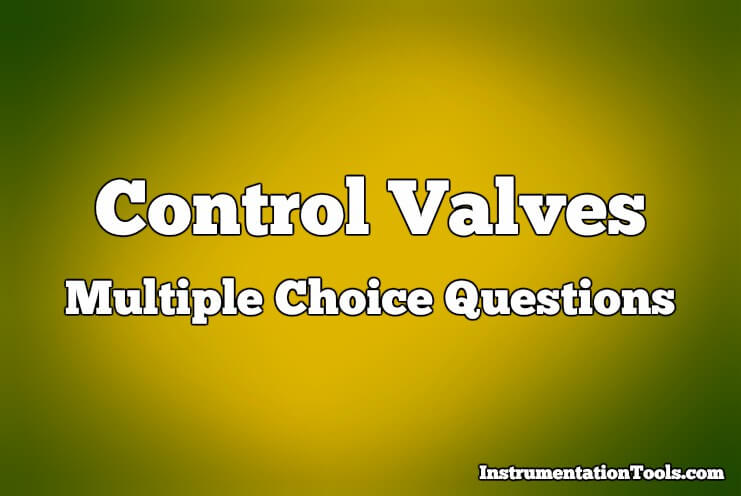
Question 1
When a valve is installed in a process with where the differential pressure (drop) across the valve decreases with increasing flow, the best trim characteristic to choose for the valve would be:
(A) Ported
(B) Quick-opening
(C) Equal percentage
(D) Linear
(E) Anti-cavitation
Answer : C
Question 2
The correct identities of the four control valve types shown below are (in order from left to right):
(A) Plug, Slide, Rotary, Ball
(B) Globe, Butterfly, Disc, Ball
(C) Ball, Gate, Butterfly, Plug
(D) Diaphragm, Gate, Disc, Globe
(E) Ball, Disc, Butterfly, Globe
Answer : C
Question 3
An air-to-open valve assembly may be formed with which of these actuator/valve body combinations?
(A) Reverse-acting actuator, direct-acting valve body
(B) Direct-acting actuator, direct-acting valve body
(C) Direct-acting actuator, reverse-acting valve body
(D) A or C
(E) B or C
Answer : D
Question 4
Calculate the necessary Cv rating for a liquid service valve, given a pressure drop of 24 PSID, a specific gravity of 1.3, and a maximum flow rate of 140 GPM. Assume there will be no flashing or choked flow through the valve.
(A) 0.1319
(B) 32.58
(C) 7.583
(D) 2585
(E) 601.5
Answer : B
Question 5
The main purpose of a control valve positioner is to:
(A) Alter the fail-safe status of the valve
(B) Improve the precision of the valve
(C) Alter the characterization of the valve
(D) Increase transmitter accuracy
(E) Eliminate cavitation in the valve
Answer : B
Question 6
The purpose of valve packing is to:
(A) Help reduce cavitation in the valve trim
(B) Increase stiction
(C) Cushion the valve against harm during shipment
(D) Seal process fluid from escaping past the stem
(E) Lubricate the valve trim
Answer : D
Question 7
The definition of split range control valves implies that they are . . .
(A) designed to be easily disassembled.
(B) easily re-ranged for different characteristics.
(C) equipped with quick-acting positioners.
(D) only used in sets of three.
(E) calibrated with complementary ranges.
Answer : E
Question 8
Dual-ported globe valves typically enjoy the following advantage over single-ported globe valves:
(A) Less actuating force required
(B) Longer service life
(C) Easier disassembly and maintenance
(D) Tighter shut-off
(E) Greater temperature range
Answer : A
Question 9
Cavitation in a control valve is caused by:
(A) process noise
(B) vibration in the piping
(C) the Von Karman effect
(D) a laminar flow regime
(E) pressure recovery
Answer : E
Question 10
The proper “fail safe” status of a valve should always be dictated by:
(A) economic savings
(B) the configuration of the positioner
(C) the controller’s tuning
(D) the controller’s action (direct or reverse)
(E) the nature of the process
Answer : E
Valves Objective Questions – Share Your Answers
11. Regardless of type, all valves have the following basic parts, with the exception of ___
a) bonnet
b) nipple
c) actuator
d) body
12. The body of a valve typically receives inlet and outlet piping through any of the following types of joints EXCEPT:.
a) glued
b) welded
c) threaded
d) bolted
13. The internal elements of a valve are collectively referred to as a valve’s .
a) guts b) trim
c) works d) packings
14. The manually operated handwheel, manual lever, motor operator, solenoid operator, pneumatic operator, or hydraulic ram are all examples of
a) a yoke
b) a stem
c) a bonnet
d) an actuator
15.Which one of the following valve parts is NOT usually considered to be a part of the pressure boundary.
a) body
b) seal rings
c) bonnet
d) disk
16.The stem in a valve, which connects the actuator and disk, is responsible for positioning the disk.
a) True
b) False
17.Most valves use_______ to prevent leakage from the space between the stem and the bonnet.
a) o-rings
b) a liquid seal
c) a metal to metal seal
d) packing
18.Which of the following types of valve uses a flow control element that involves sliding a flat, cylindrical, or spherical surface across an orifice?
a) globe and needle valves
b) butterfly and diaphragm valves
c) gate and plug valves
d) globe and gate valves
19.Which of the following types of valve uses a flow control element that involves moving a flexible material into the flow passage?
a) diaphragm and pinch valves
b) globe and needle valves
c) gate and plug valves
d) needle and pinch valves
20.Which of the following types of valve uses a flow control element that involves moving a disc or plug into or against an orifice?
a) gate and plug valves
b) globe and gate valves
c) globe and needle valves
d) butterfly and diaphragm valves
21.Which of the following types of valve uses a flow control element that involves rotating a disc or ellipse about a shaft extending across the diameter of an orifice?
a) gate and plug valves
b) globe and gate valves
c) glove and needle valves
d) butterfly and ball valves
22.Gate Valves are not recommended for applications which:
a) require regulation and throttling of flow
b) require good sealing with little or no leakage
c) can have no resistance to flow when the valve is open
d) require the use of flanged connections
23.The _____ is the most commonly used disk within a gate valve, because of its simplicity and strength.
a) parallel disk
b) flexible wedge
c) split wedge
d) solid wedge
24.A globe valve is suitable for stopping and starting fluid flow, but not for regulating flow.
a) True
b) False
25.Which of the following is the globe valve body design that is the simplest and most common for water applications?
a. Z-body
b. X-body
c. Angle
d. Y-body
26.Which of the following is the globe valve body design that provides a remedy for the high pressure drop inherent in globe valves?
a) Z-body
b) X-body
c) Angle
d) Y-body
27.Which of the following is the globe valve body design that can be used as both a valve and a piping elbow?
a) Z-body
b) X-body
c) Angle
d) Y-body
28.Which of the following valve types has an actuator that is of the quick-acting type, requiring only a 90 deg turn of the handle to fully open or close the valve?
a) gate valve
b) globe valve
c) ball valve
d) pinch valve
29.Which of the following valve types is well suited for an application where corrosion or metal contamination of the fluid might be a problem, because the operating mechanism is completely isolated from the fluid?
a) pinch valve
b) gate valve
c) butterfly valve
d) reducing valve
30.Which of the following types of valve causes the greatest head loss when completely open?
a) ball valve
b) gate valve
c) butterfly valve
d) globe valve
31.Which of the following is a disadvantage of ball valves?
a) They are large and heavy.
b) They have high maintenance costs.
c) They have relatively poor throttling characteristics
d) They are among the most expensive of the valve types.
32.The gland of a plug valve is equivalent to the ___ of a gate or globe valve.
a) body
b) packing
c) seat
d) bonnet
33.Which type of valve has advantages over other valve designs in weight, space and cost for large valve applications?
a) butterfly valve
b) globe valve
c) diaphragm valves
d) gate valves
34.All of the following are general types of check valves EXCEPT _.
a) butterfly
b) plug
c) swing
d) tilting disc
35.Relief and safety valves prevent equipment damage by relieving accidental over-pressurization of fluid systems.
a) True
b) False








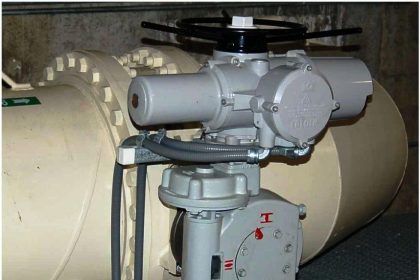

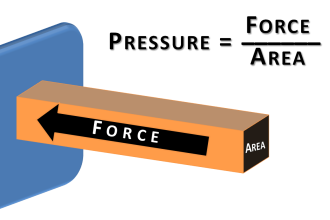
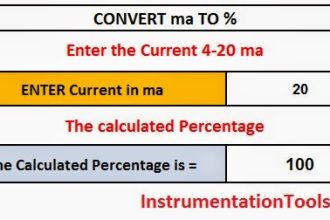


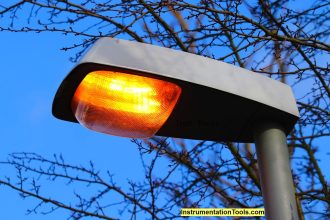
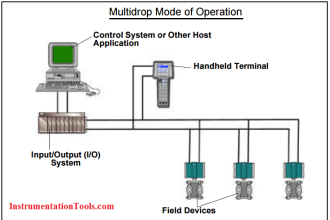
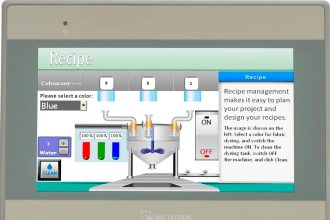

Dear Sir,
I want to Congratulate you for launching, maintaining & updating this Website, which is Providing lots of Instrumentation Knowledge & related information through different Ways on a single Platform.
Well, regarding the “Multiple Choice Questions” Block, it’s a kind request to put the answers for the Questions at the end of the Page; so that the Users get a chance to evaluate & choose the correct answer.
Finally, I would like to express gratefulness to you & your Team for the Work done.
Thank You.
Good Suggestion. Noted. Thanks
Dear Sir,
Well, under the “Multiple Choice Questions” Block, please put the answers for all the Questions at the end of the Page; so that, we get a chance to evaluate and choose the correct answer.
Thanks for providing lots of information on the “INSTRUMENATION” Field.
thanks reddy
this is best site for practical instrument stay 1…;))
ANSWERS from Inst Forum
11. b- Valve nipples are small in size so they are not found in large open channel valves
12. b
13. b
14. d- They are actuators rely on input signal like 4-20mA, or 3-15psig.
15. c- bonnet is there in upward assembly supporting stem travel. They are not exposed to inlet pressure
16. a
17. c
18. c
19. a
20. a
21. d
22. c
23. c
24. false
27. angle
28. ball
29. a-they are made of rubber or synthetic material within flange.
30. b
31. c
32. a
33. a
35. true
Many wrong answers in this comment. “Some” corrections are 12.(a), 17.(d), 20.(b), 22(a), 23(d), 25. no answer given….answer is (a)., 26. nag…answer is (d)., 30.(d), 32.(d), 34. nag…answer is (b). Shameful.
I have pneumatic control valves. This is used to gut the molasses. To control the molassas. Molasses is in the required amount of vibrations and how to maintain this standard. Honeywel control udc1500 pneumatic valve transducer (electrical pressure)What is the reason for this change? It did not exist just because it was in good shape. Give the answer.
Can you say about all the instruments M.O.C such as control valves, flow meter, level switches
answer for q.no 30 should be d
A fully-open gate valve will produce a greater system head loss than a fully-open globe valve.